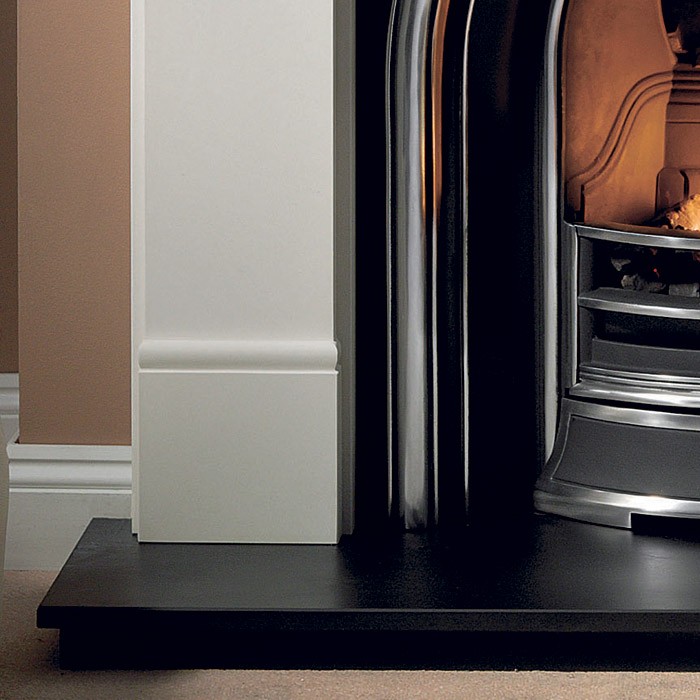Blog
What is a Fireplace Hearth For?
Working in the fireplace industry there are certain facts about fireplaces we tend to see as so obvious, that they don’t need to be explained. Every so often someone asks an unexpected question, which of course makes us wonder how many other people are unsure about the same thing. Recently one of our customers asked what a fireplace hearth is for, and we decided to share the answer in case anybody else is wondering.
Most people just think of a fireplace hearth as the slab of stone which lies at the base of the fireplace below the grate, stove or fire. In fact there are usually two parts to a fireplace hearth – the decorative slab visible at the base of the fireplace, and a thick concrete sub-hearth below which lies flush with the floor. Together they provide a heat shield to prevent the heat from the fire from spreading to nearby joists which could catch fire if not protected. The decorative hearth has additional fire prevention functions – by creating a raised area near the fire it subtly deters people from placing flammable materials too close to the fireplace, and it provides a non-combustible surface around the fire in case any burning embers spill out.
The traditional combination of sub-hearth and decorative hearth harks back to the days when open fires were the norm, but is still important for modern combustion appliances such as gas fires and solid fuel stoves. UK Building Regulations set out strict requirements for hearths for combustion appliances in Document J. It is vital to confirm that your hearth is suitable for any new stove or fire you are thinking of having installed, and this is one of the points a professional will check when visiting your home to do a fireplace or fire installation survey.

